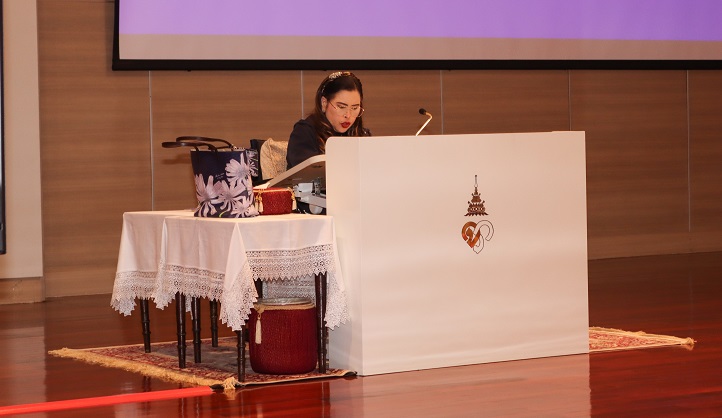Professor Dr. Her Royal Highness Princess Chulabhorn Krom Phra Srisavangavadhana graciously went to deliver the second instalment of the special lecture series on the formation of cancer to students of Chulabhorn Graduate Institute
Today (Wednesday 12 March 2025) at 12:28 PM Professor Dr. Her Royal Highness Princess Chulabhorn Krom Phra Srisavangavadhana graciously went to the main auditorium on level 2 of the Chulabhorn Graduate Institute building in Lak Si district. Her Royal Highness kindly delivered the second instalment of the special lecture series on the formation of cancer: oncogenesis, to the faculty members, researchers, and the Master’s degree and doctoral students, who included the first-year and second-year students of the Applied Biological Sciences: Environmental Health Program and the Environmental Toxicology Program of Chulabhorn Graduate Institute.
Today Her Royal Highness gave the lecture on oncogenes and the control of cell growth and tumor suppressor genes, which have a crucial role in the process of cancer formation. When mutation occurs in the genes that control cell growth, transforming them into oncogenes, a rapid and uncontrollable cell proliferation will follow, eventually resulting in the genesis of cancer cells. Her Royal Highness cited the case of cancer arising from oncogenic virus, whose genes intrude into and control the function of the genes of cells, resulting in the genetic mutation, chromosomal translocation, as well as the proliferation of genes found in various types of cancer and the transformation of normal genes into oncogenes or genes that cause cancer.
Apart from oncogenes, there are also tumor suppressor genes p53, whose mutation is most frequently found in human cancers, which is related to the formation of esophageal cancer and Colorectal cancer. The mutation may be genetically induced or caused by external factors. Understanding of these genes, as well as the mechanisms and changes at the cellular and genetic levels, is a crucial basis leading to the development of the methods of cancer diagnosis, which will, in turn, lead to new approaches to the treatment of the disease, which is directly relevant to its characteristics and medicinal treatment, as well as to the development of more effective medicine and treatment.
ศาสตราจารย์ ดร.สมเด็จพระเจ้าน้องนางเธอ เจ้าฟ้าจุฬาภรณวลัยลักษณ์ อัครราชกุมารี กรมพระศรีสวางควัฒน วรขัตติยราชนารี เสด็จไปทรงบรรยายพิเศษพระราชทานแก่นักศึกษาสถาบันบัณฑิตศึกษาจุฬาภรณ์ เรื่อง การเกิดโรคมะเร็ง เป็นครั้งที่ ๒
วันนี้ (พุธที่ ๑๒ มีนาคม ๒๕๖๘) เวลา ๑๒.๒๘ น. ศาสตราจารย์ ดร. สมเด็จพระเจ้าน้องนางเธอ เจ้าฟ้าจุฬาภรณวลัยลักษณ์ อัครราชกุมารี กรมพระศรีสวางควัฒน วรขัตติยราชนารี เสด็จไปยังห้องประชุมใหญ่ ชั้น ๒ อาคารสถาบันบัณฑิตศึกษาจุฬาภรณ์ เขตหลักสี่ ทรงบรรยายพิเศษ เรื่อง กลไกการเกิดโรคมะเร็ง (Oncogenesis) เป็นครั้งที่ ๒พระราชทานแก่คณาจารย์ นักวิจัย และนักศึกษาสถาบันบัณฑิตศึกษาจุฬาภรณ์ ระดับปริญญาโทและปริญญาเอก ชั้นปีที่ ๑ และ ๒ สาขาวิชาพิษวิทยาสิ่งแวดล้อม และวิทยาศาสตร์ชีวภาพประยุกต์: อนามัยสิ่งแวดล้อม ของสถาบันบัณฑิตศึกษาจุฬาภรณ์
ในวันนี้ ทรงบรรยายเรื่อง การเกิดโรคมะเร็ง หัวข้อ ยีนก่อมะเร็งกับการควบคุมการเจริญของเซลล์ และ ยีนยับยั้งการเกิดมะเร็ง ซึ่งมีบทบาทสำคัญอย่างยิ่งในกระบวนการเกิดมะเร็ง เมื่อเกิดการกลายพันธุ์ของของยีนที่ควบคุมการเจริญของเซลล์ ไปเป็นยีนก่อมะเร็ง จะส่งผลให้เซลล์มีการแบ่งตัวแล้วเจริญอย่างรวดเร็วจนไม่สามารถควบคุมได้ ทำให้เกิดเซลล์มะเร็งในที่สุด และทรงยกตัวอย่างการเกิดยีนมะเร็งจากไวรัส โดยที่ยีนของไวรัสแทรกเข้าไปในยีนของเซลล์และเข้าควบคุมการทำงานของยีน การเกิดการกลายพันธุ์ของยีน การย้ายตำแหน่งของโครโมโซม รวมทั้งการเพิ่มจำนวนของยีนที่พบในมะเร็งต่างชนิดกัน ทำให้เกิดการเปลี่ยนแปลงยีนปกติให้เป็นอองโคยีน หรือยีนก่อมะเร็งได้
นอกจากยีนมะเร็งแล้ว ยังมียีนยับยั้งการเกิดมะเร็ง p53 ซึ่งพบว่า มีการกลายพันธุ์ของยีนนี้บ่อยที่สุดในมะเร็งที่พบในคน โดยมีความสัมพันธ์กับการเกิดโรคมะเร็งหลอดอาหารและมะเร็งลำไส้ การกลายพันธุ์นี้อาจเกิดจากกรรมพันธุ์หรือถูกกระตุ้นจากปัจจัยภายนอก ความเข้าใจในเรื่องยีนเหล่านี้ ตลอดจนกลไกและความเปลี่ยนแปลงในระดับเซลล์ และระดับยีน จะเป็นพื้นฐานสำคัญที่จะนำไปสู่การพัฒนาวิธีการวินิจฉัยโรคมะเร็ง ที่จะนำไปสู่การรักษาในแนวใหม่ ที่จะตรงกับลักษณะของโรค โดยเป็นเป้าหมายในการใช้ยาที่ตรงเป้า ไปจนถึงการพัฒนายาและการรักษาที่มีประสิทธิภาพที่ดีขึ้น
 |
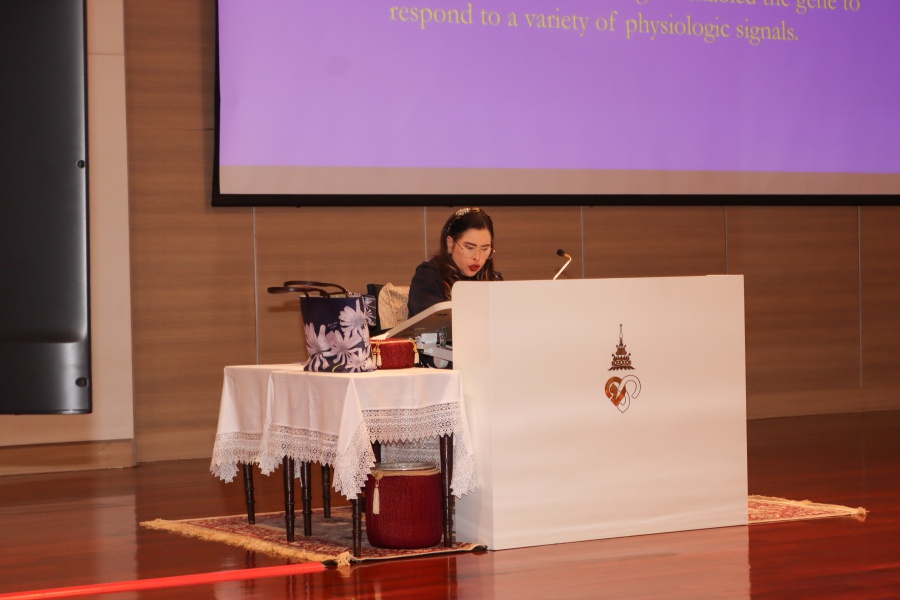 |
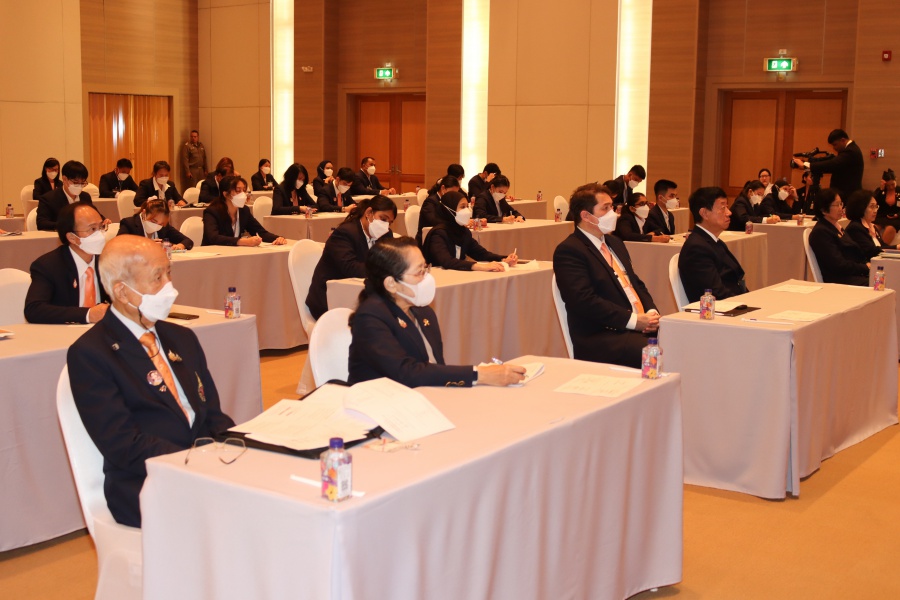 |
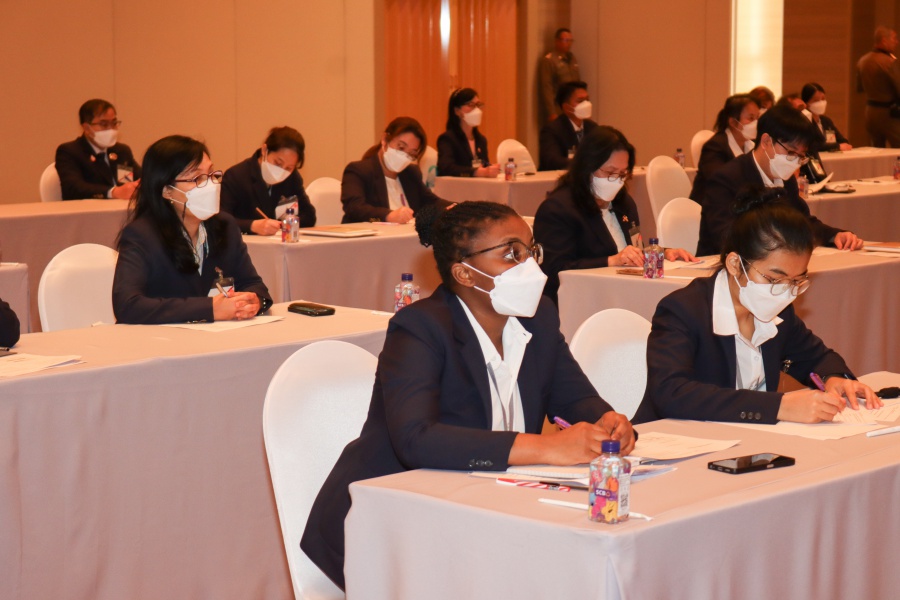 |
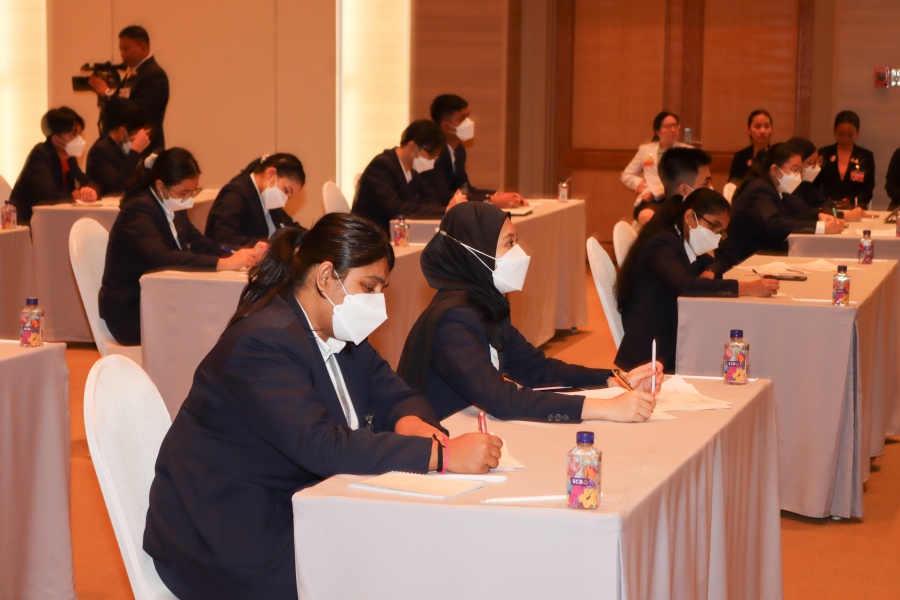 |
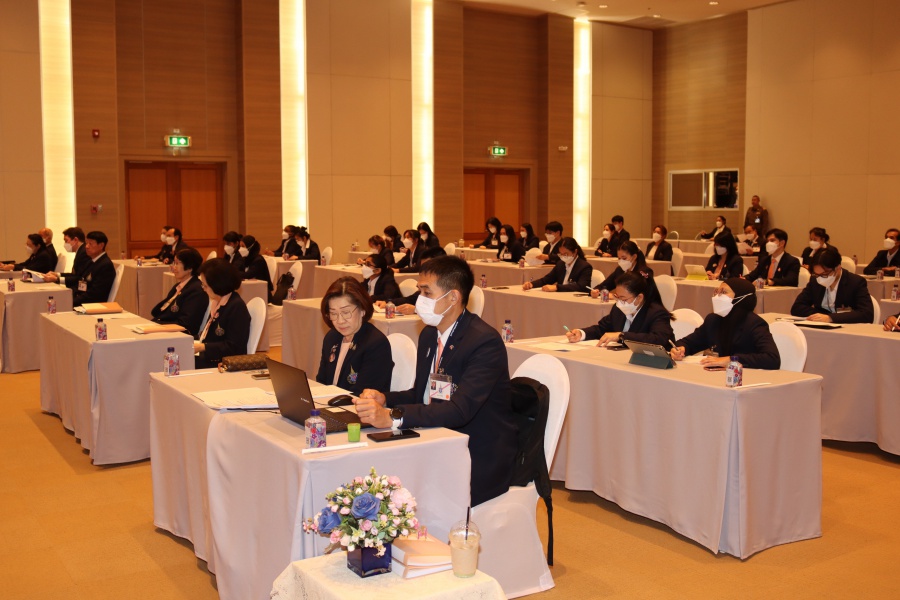 |
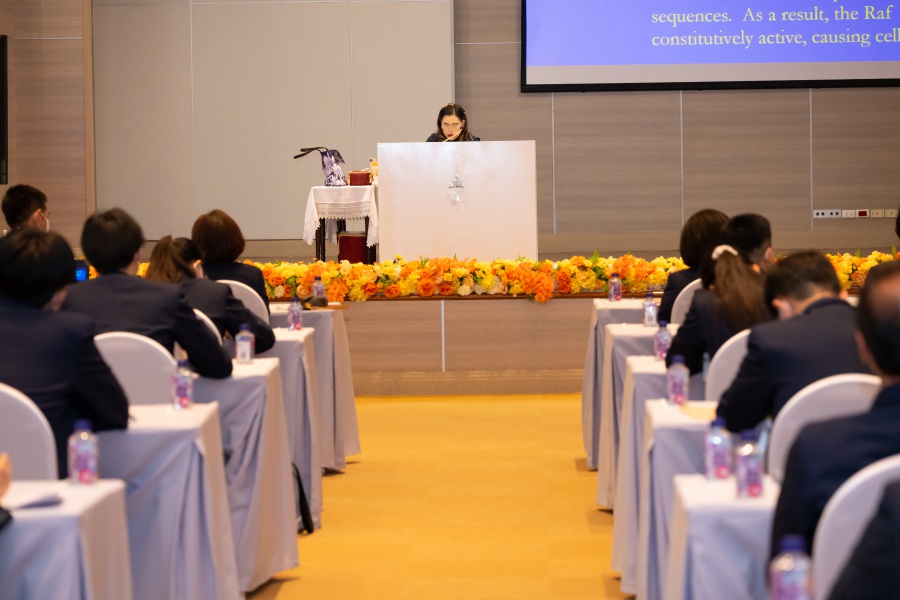 |
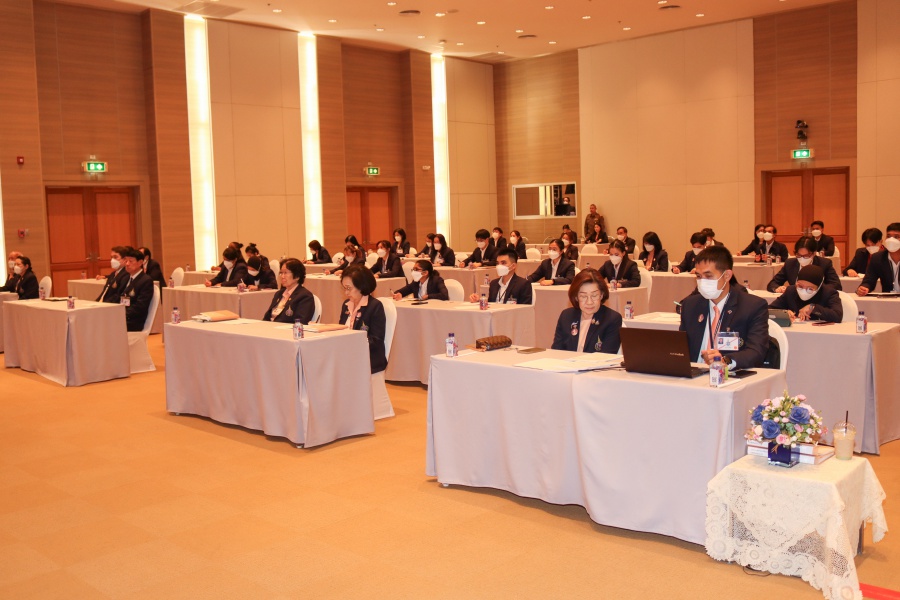 |
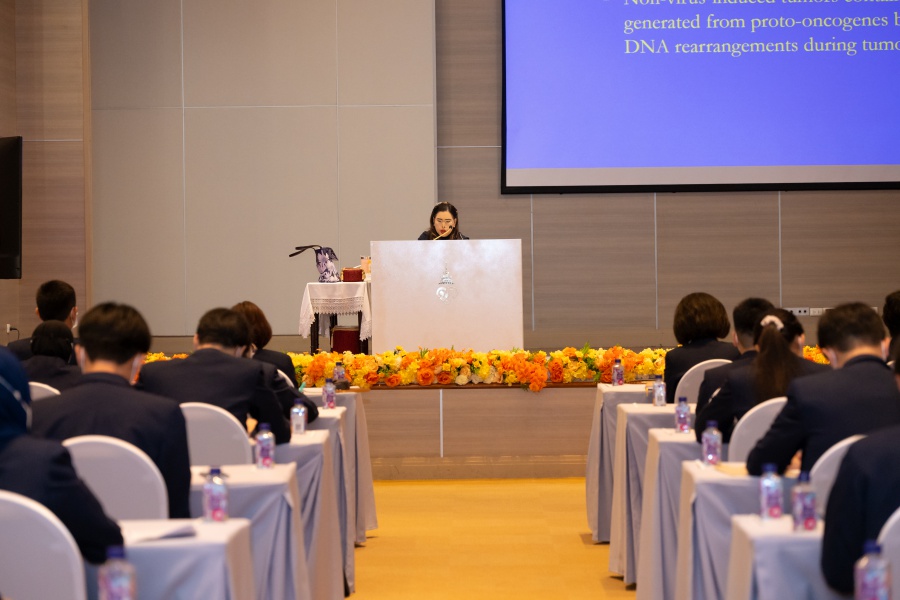 |

